
NY Coastlines—New York Sea Grant (NYSG)'s flagship publication—and its news archive, Currents, highlight news, events and other activities from our coastal program's
various research, extension and education endeavors throughout New
York's marine and Great Lakes waters.
Late Summer / Early Fall 2018
NY Coastlines / Currents; Vol. 46, No. 3 & 4 / Vol. 6, No. 2
Feature: Are You #StormReady?
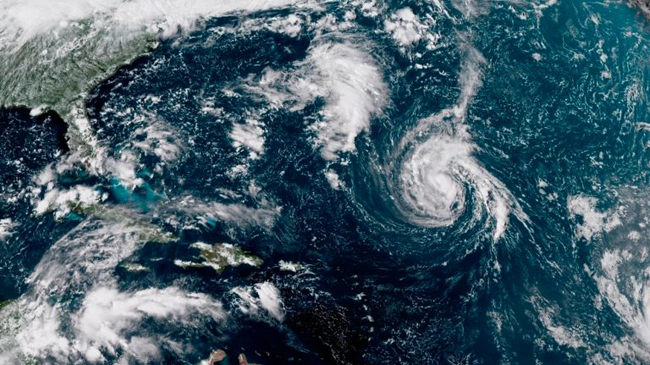
How are hurricanes forecast?
How can you prepare for an approaching storm and remain safe during its impact?
Answers to these and other preparedness questions will be answered in two Long Island community forums on hurricanes that Sea Grant will host in late September.
NYSG's Coastal Processes and Hazards Specialist Kathleen Fallon will be joined by representatives from the National Oceanic and Atmospheric Administration's (NOAA) National Weather Service and local experts at both events; Agents from Suffolk County Emergency Management and the Federal Emergency Management Agency will also present at, respectively, the events in Quogue and Freeport.
Free registration is encouraged.
Thursday, September 20th:
Quogue Wildlife Refuge: Register | Flyer
Thursday, September 27th:
Operation SPLASH, Freeport: Register | Flyer
Also:
Should I Stay Or Should I Go?
Investigators examine public responses to severe storm threats in NOAA Sea Grant-funded studies.
Sea Grant also provides tips to empower preparedness. It's crucial to have a plan in place before one is needed for an emergency. This will help to minimize panic and enable you to keep your family calm, cool, collected, and most importantly, safe. Read on >>
Before a Severe Storm Hits, Learning to Communicate about the Risks
NOAA Sea Grant-funded researchers are trying to understand how people respond to hurricane threats and different types of messages about the risks. Findings have been published in the International Journal of Disaster Risk Reduction.
"The results of this research can help weather forecasters, emergency managers, and others learn how to better communicate with diverse populations about the risks posed by an approaching hurricane," said Rebecca Morss, the article's lead author.
Co-author of the article Cara Cuite, Ph.D—an Assistant Extension Specialist at Rutgers University's Department of Human Ecology—is also a principal investigator on the related Coastal Storm Awareness Program project "Best Practices in Coastal Storm Risk Communication." Read on >>
On Air: NOAA Updates its 2018 Atlantic Hurricane Outlook, Provides Snapshot of 2017 Season
"There are still more storms to come—the hurricane season is far from being over. We urge continued preparedness and vigilance," said Gerry Bell, Ph.D., lead seasonal hurricane forecaster at NOAA's Climate Prediction Center. Read on >>
Resources to "Be Aware, Be Alert, Be Safe" ...
NYSG's Other Seasonal Tips ...
- Eight Cooler Weather Water Safety Tips Read on >>
- On YouTube: Sea Grant's Winter Season Do's & Don'ts for Boaters Read on >>
NOAA National Weather Service's Seasonal Weather Safety Tips ...
Letter from the Interim Director
Welcome to our latest electronic issue of New York Coastlines!
Partnerships and Collaborations—no Sea Grant program could succeed in " Bringing Science to the Shore" without them. Whether we are addressing Harmful Algal Blooms, Severe Storms, Rip Currents, Boating Safety, Fisheries, or Shoreline Protection and Restoration, partners are a key ingredient to our success.
In this issue, we highlight many activities from the summer season—all of which were made possible by our partners and collaborators, including, but not limited to our funded researchers, the Boating Industries Association of Upstate New York, Suffolk County, NYC Emergency Management, and the New York Geographic Alliance, as well as numerous interns from across the country helping us and our partners with producing and promoting NY seafood. I'd also like to thank the NYS Department of Environmental Conservation, our partner in improving Great Lakes community resilience through a small grants program enabling communities to fund needed projects.
Please keep reading to learn about other partners, programs and initiatives that meet our goals:
Healthy Coastal Ecosystems
Sustainable Fisheries, Aquaculture and Seafood Businesses
Resilient Communities and Economies
Environmental Literacy and Workforce Development
Kathy Bunting-Howarth
What's Trending: Small Grants in Local Communities Restore, Revitalize NYS's Great Lakes region
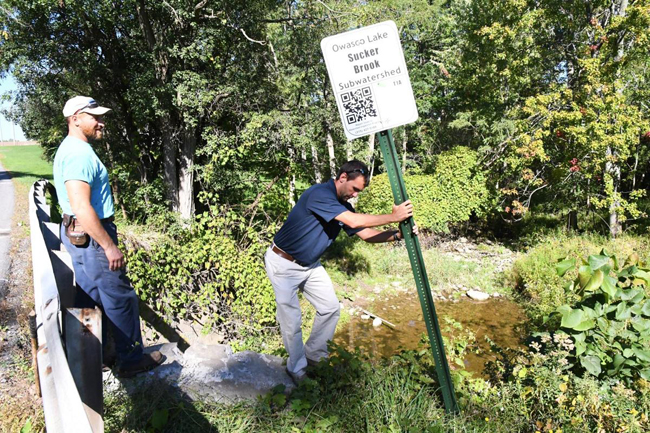
NYSG, in partnership with the New York State Department of Environmental Conservation, administers a small grants program as part of State's ongoing commitment to strengthen the New York Great Lakes Basin environment and economy.
For the third year in a row, NY Governor Andrew Cuomo has sustained the State's Environmental Protection Fund at $300 million, supporting critical projects in the Great Lakes watershed and across the state, protecting and enhancing New York's unmatched natural resources
2017-19 Great Lakes Small Grants:
On YouTube: $200,000 in Grant Projects Will Enhance Community and Ecosystem Resiliency (May 2018)
The eight new projects consider, among other things, living shoreline practices to protect property, enhance aquatic habitat, assess wastewater system upgrade options, and inform local stakeholders about resilience practices. Read on >>
$199,575 in Grants to Enhance Community and Ecosystem Resiliency (September 2017)
Among the eight new projects are efforts to conserve and restore native wildlife and habitats, improve water quality, and increase resiliency for Great Lakes coastal communities. Read on >>
2015-17 Great Lakes Small Grants:
Project Summaries (July 2018)
Between 2015 and 2017, some 13 projects amounting to $281,000 in grants were funded via this program. As part of the larger, multi-year partnership that continues through at least 2022, the purpose of these projects is to help Great Lakes coastal communities enhance their resiliency to events like severe storms and protect water quality. Read on >>
Feature Story: Stream-Road Crossing Markers (July 2018)
In determining how best to approach covering this story, writer Chris Gonzales said, "I was thinking about going to Owasco Lake, where the objective would be to document the signs, which were such a small-seeming symbol. In the project's report, the author called them 'stream-road crossing markers.'
The locations were less than an hour from my home. These signs would be markers of a much bigger initiative—ecological and community-building projects across New York's Great Lakes, projects that bore implications for the nation and beyond." Read on >>
What's Trending: In Program's 40th Year, Two from New York Named Knauss Finalists in 2018
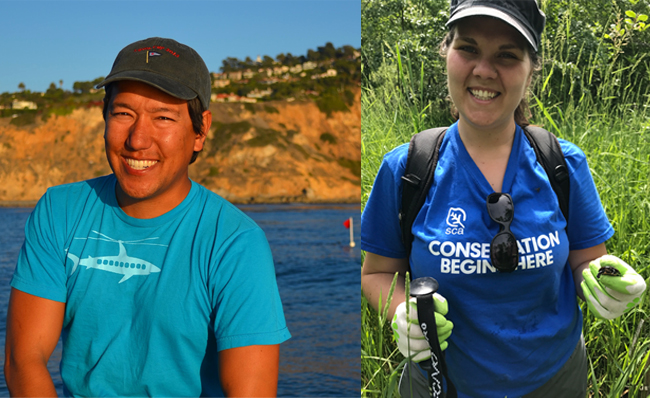
"The Knauss fellowship is one of Sea Grant's flagship programs," said Jonathan Pennock, Director of the National Sea Grant College Program. "Every class of Knauss fellows continues to raise the bar, and the 2019 finalists are no exception."
The two awardees from New York, Sam Chew Chin and Chellby Kilheffer, have been identified in the Executive cohort. This means that in mid-October these two graduate students will visit D.C., where, if placed, they will be matched with "hosts" in the U.S. executive branch of government for a one year paid fellowship. Read on >>
What's Trending: NOAA and Sea Grant's Mid-Atlantic Ocean Coastal and Estuarine Acidification Graduate Research Fellowship
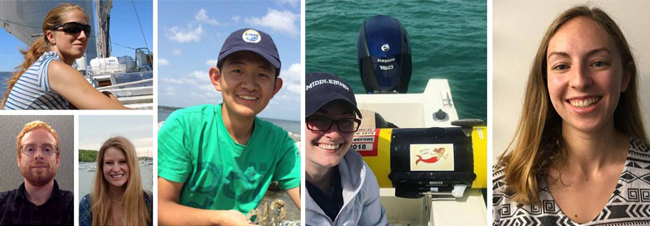
NOAA Ocean Acidification Program and the National Sea Grant College Program are pleased to announce the 2018 recipients of a new Mid-Atlantic Graduate Research Fellowship in Ocean, Coastal, and Estuarine Acidification.
Six fellowships were awarded through a competitive selection process to provide Masters and Doctoral students two years of funding during the 2018 and 2019 academic years through the Mid-Atlantic Sea Grant programs. Two of these are being provided to Stony Brook University graduate students: Caroline Schwaner and Teresa Schwemmer.
In addition to supporting students' academic expenses, the fellowship will provide additional professional development opportunities and facilitate interaction with ocean, coastal, and estuarine acidification stakeholders.
In mid-August, the fellows participated in a training week during which they visited various Sea Grant communication offices, aquaculture facilities, academic laboratories, and NOAA science centers. Learn more >>
#Research
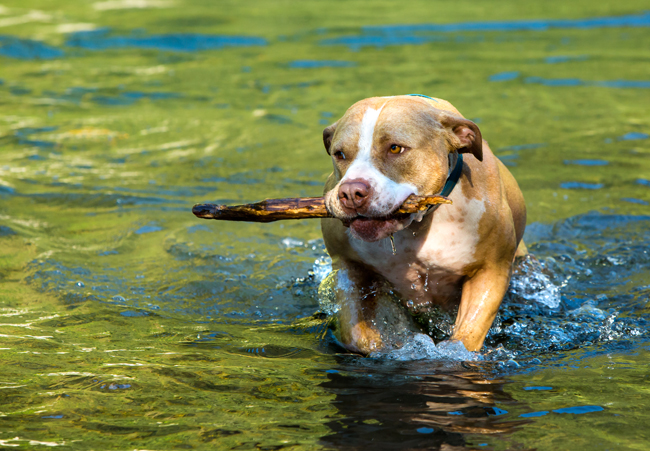
The ABCs of HABs: Sea Grant Funds Research, Supports Education
To the casual observer, HABs first appear as a mysterious, unusual color in the water: red, brown, green, or sometimes blue-green. However, the colorful displays wreak havoc in marine and freshwater habitats, as blooms can be a nuisance or set off damage in ecosystems. Algae can also make the family dog sick, or cause death, just as it may cause illness or even death in humans.
While the color gives rise to common names such as red tide or brown tide, scientists use the technical term "HABs" to denote several types of "harmful algal blooms," which are defined as conditions when a subset of algal species—tiny aquatic plants—produce toxins or grow excessively, harming humans, other animals and the environment.
HABs and Dogs: Stay Smart About Algal Blooms (June 2018) Read on >>
State of the Bays: Water Is at the Core of the Long Island Existence (June 2018) Read on >>
2018 Harmful Algal Bloom Symposium (May 2018)
The Suffolk County HAB Action Plan, unveiled at the symposium, offers key management decisions and actions and recommends strategies that reduce nitrogen and phosphorus loading to ground watersheds, surface watersheds, and direct inputs to surface waters, particularly by upgrading septic systems.
Insights & Summary Read on >>
Presentations Read on >>
More NYSG #Research news ...
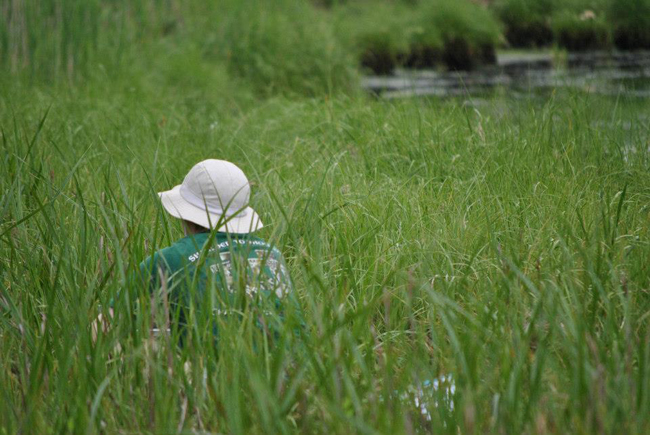
The Climate Change—Nitrogen—Salt Marsh Puzzle (August 2018)
Scientists are trying to protect the health of salt marshes, important ecological features on sea shores that filter water, buffer coastal land from the seas, and host a variety of marine life. A journal article published in Ecosphere details their study's focus on salt marsh health factors, in particular salinity—the amount of salt dissolved in the water—as well as nitrogen content. Read on >>
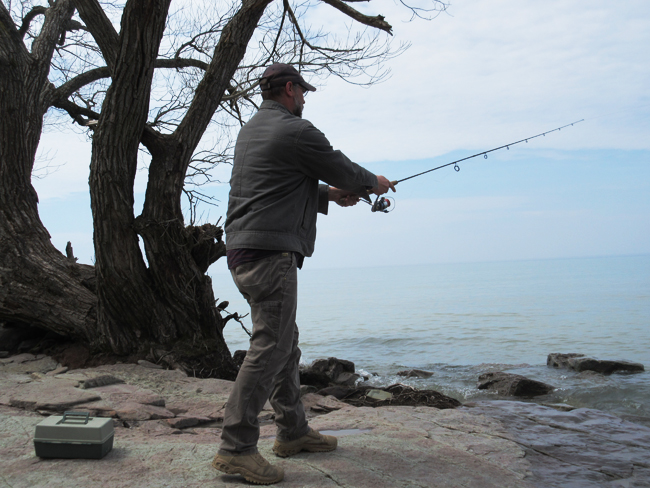
What Do Lake Ontario's "Resident Anglers" Want? (May 2018)
As seen in a paper published in Fisheries Research, investigators are wise to study anglers living close to Lake Ontario—a prime fishing destination in upstate NY and Canada—as these residents drop their lines in the region's waters more often than just about anyone else. Read on >>
#Extension
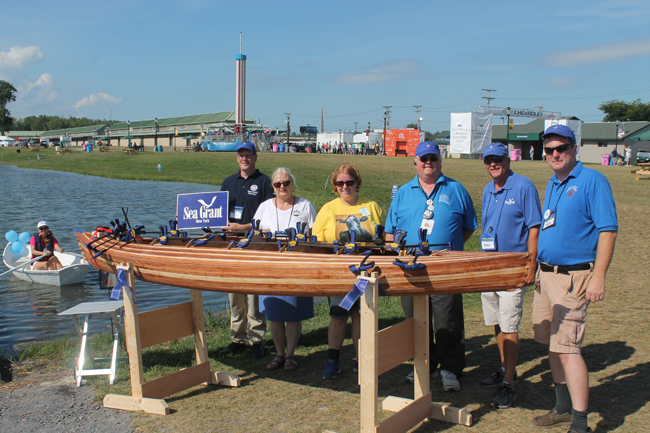
On YouTube, In Photos: Sea Grant & Partners Educate at 2018's New York State Fair Exhibit
Why focus on "Lighthouses and Lifesaving" for this year's "Path Through Maritime History" exhibit coordinated by Sea Grant for the New York State Fair, which wrapped up on Labor Day?
According to Dave White, NYSG's Recreation Specialist, lighthouses are "a critical component of our maritime history and how we've grown as a country and being able to provide that opportunity to get folks safely in and out of our harbors."
And ... find out whose name was drawn and what the new name is for the dory built on-site during the 13 day Syracuse-based festival. Read on >>
Also:
On YouTube: Sea Grant Supports Its 11th Consecutive Summer of "Clean and Safe Boating" (August 2018)
Check out nearly a dozen video clips from NYSG's summer 2018 campaign highlighting environmentally-sound boating practices for recreational boaters. Read on >>
In Photos: 5 Tips to Rent a Boat (May 2018)
Sea Grant and Boating Industries Association of Upstate New York prepare you for renting a boat through the fall season. Read on >>
More NYSG #Extension news ...
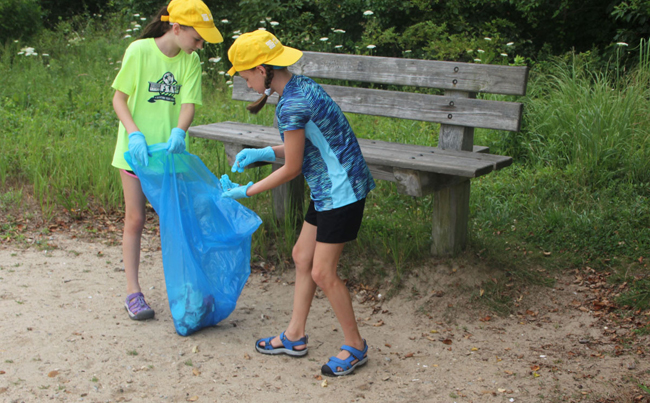
Sea Grant Spotlights What You Can Do to Help Long Island Sound (September 2018)
The marine debris campaign, Long Island Sound Study's second, focused on encouraging local residents to "Break the Single-Use Plastic Habit" by bringing their reusable bags and bottles to the beach this past summer. Read on >>
Krista Stegemann Joins New York Sea Grant as its Ocean & Marine Outreach Coordinator (August 2018)
The former fifth-grade science teacher's work at Sea Grant is in support of the New York State Department of Environmental Conservation's NY Ocean Action Plan, which she will help implement through outreach, education, and stakeholder engagement. Read on >>
Jamaica Bay Podcast Series Tells Listeners About Life in the Bay (August 2018)
To get the word out about Jamaica Bay, which is home to nearly three million people, NYSG's Coastal Resilience Extension Specialist Helen Cheng created the Jamaica Bay podcast series, a collection of stories featuring the people that work, live, and play in this New York City watershed. Read on >>
Web Site: New York Shorelines (July 2018)
NYSG is a proud partner for this collaborative two-year initiative, for which the goal is to develop and test a monitoring framework for a range of shoreline stabilization strategies to better understand their ability to provide ecological services, mitigate storm impacts, and contribute to community well-being. More at www.nyseagrant.org/nyshorelines.
Fact Sheet: NYSG Provides Resources to Avoid Rip Current Dangers (June 2018)
Educating beachgoers about rip currents and how to spot them before they're in the proximity of one is essential. Read on >>
Climate Forum Presentations Inform Flooding Preparedness (May 2018)
NYSG and the Science and Resilience Institute at Jamaica Bay hosted its fifth Climate Forum in the Bergen Beach-Mill Basin neighborhood of South Brooklyn. Read on >>
New York Great Lakes Shoreline Contractors List (April 2018)
Details on contractors available for shoreline contracting work in New York State's Great Lakes region. Read on >>
#Education
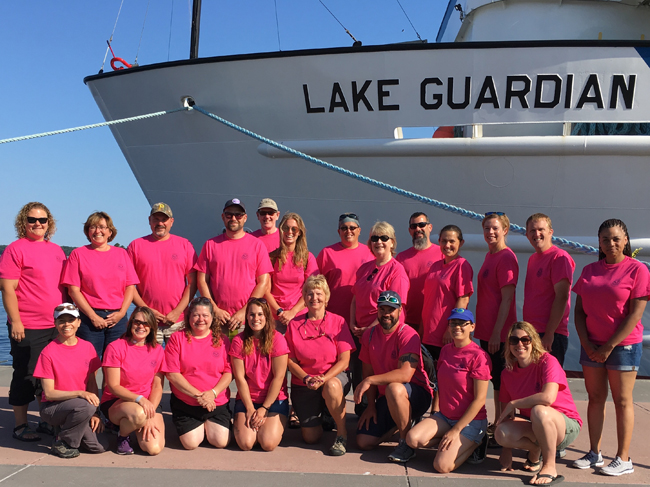
On YouTube, On Air, In Photos: A Week-long Exploration of Lake Ontario for Great Lakes Teachers via EPA R/V Lake Guardian
Sixteen teachers and educators from around New York and several U.S. Great Lakes states (including the ones pictured above) explored a number of locations along Lake Ontario while aboard the U.S. Environmental Protection Agency (EPA)'s R/V Lake Guardian in early July. Kneeling in the center of this group is Helen Domske, New York Sea Grant Coastal Education Specialist, one of the leaders of the program. Read on >>
Also:
In Photos: NYSG Extends A-Z GLEEE Education on Lake Ontario (August 2018)
"This workshop was an opportunity for us to work with a new group of teachers, ones in the Central New York region who have not yet been exposed to the program and the basin bin materials we can make available to them," said Domske. Read on >>
Helen Domske receives IAGLR's Vallentyne Award, Among Others, For Her Excellence in Education (June 2018)
Domske's nearly 40 years of research and outreach are exemplary. Read on >>
More NYSG #Education news ...
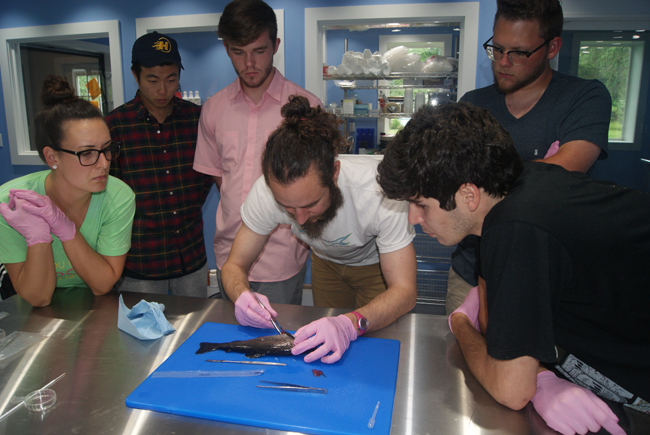
This past summer, a handful of interns helped Sea Grant specialists extend their fisheries and seafood programming ...
Intern Encourages Support for Local Fishing Businesses (July 2018)
NYSG partnered with CCE Nassau County in July to organize an information desk from which information was distributed about local seafood choices and seafood production. Read on >>
NYSG's Seafood Specialist Guides Interns Through "Fish-to-Dish" Program (August 2018)
"This program helps us to meet a serious need in addressing the lack of seafood- and aquaculture-specific education programs," said NYSG Seafood Specialist Mike Ciaramella. Read on >>
Also:
Spotlight on Five "Fish-to-Dish" Interns & Industry Partners (June 2018) Read on >>
Publications: Sea Grant Offers Seafood Science and Aquaculture Classroom Curricula (June 2018)
The curricula serve as outlines introducing seafood science and aquaculture topics to students. Lesson plans accompanying the curricula guide specific classroom activities to engage students with aquaculture and seafood science materials. Read on >>
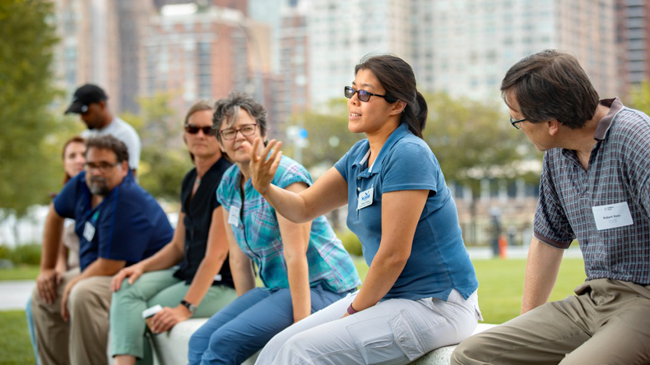
Campaign Aims to Bring Climate Science to Every U.S. High School (August 2018)
The Cornell-affiliated Paleontological Research Institution has launched a new partnership with New York Sea Grant and is in the second phase of a crowdfunding campaign in its quest to bring climate change science to every U.S. high school. Read on >>
Students Collaborate with Resilience Professionals at First RiSC Summit (June 2018)
The Resilient School Consortium program seeks to educate students and provide funding for resiliency projects that they develop and to provide an opportunity for youth voices to be heard by climate resilience practitioners and decision-makers of New York City. Read on >>
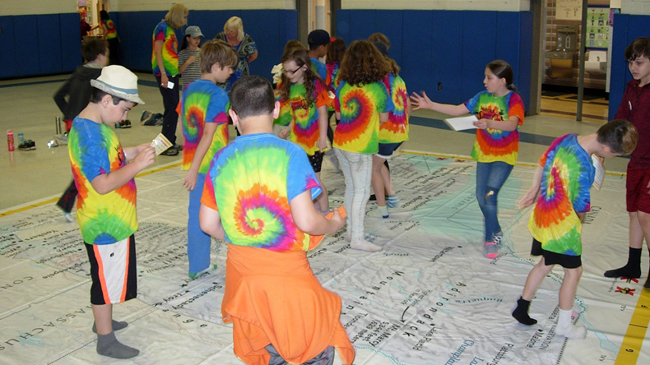
Fact Sheet: Giant Map Gives 'Foots-On' Education About New York Geography (June 2018)
The map, which offers an opportunity for educators to make coastal connections for New Yorkers, raising awareness and improving coastal literacy, appeared in more than a dozen schools and organizations this past spring. Read on >>

NYSG Trains Stewards on Stopping the Spread of Aquatic Hitchhikers (July 2018)
One of the important roles for watercraft inspection stewards is data collection. Information from stewards is compiled into a standardized data set, where program coordinators can review the data, which provides a better analysis of New York State's aquatic invasive species (AIS) prevention efforts. Read on >>
Also:
Publications: Adopt a Habitatitude (March 2018)
Adopt a Habitattitude™ is a series of classroom-tested, electronically available activities designed to be used by teachers and informal educators in grades 6-12. These innovative and engaging activities can help students learn about and prevent the spread of AIS. Read on >>
Late Summer / Early Fall 2018
NYSG's Currents News Archives (Vol. 6, No. 2)

Keep tabs on NYSG's news in between issues of NY Coastlines / Currents via our Web site (www.nyseagrant.org) and blog (www.nyseagrant.org/blog).
Here's a sampling of other stories that have made waves this past year in on our social media platforms and via our site's News (www.nyseagrant.org/currents) and topic-based News Archives (www.nyseagrant.org/currentsarchive) sections ...
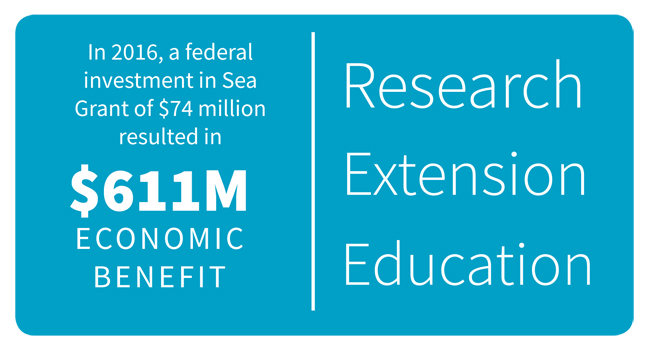
2018 Biennial Report to Congress on the State of Sea Grant (June 2018) Read on >>
Over 500 Sea Grant extension agents and 300 educators are stationed in communities across the country to advance understanding of ocean, coastal and Great Lakes science for increasing resilience of communities and economies.
With a federal investment in Sea Grant of $74 million in 2016, the collective efforts of these and other Sea Grant employees and funded investigators has resulted in a $611 million economic benefit.
Sea Grant Partners For ChooseLI.org Launch, Encouraging Residents to Support Local Food Businesses (July/September 2018) Read on >>
A Suffolk County Web site launched this past summer to encourage Long Island consumers to commit 10% of their food-spending dollars on local produce released a new feature just ahead of fall harvest: an interactive map.
On Air, In Media: Pet Owners Warned of Potentially Lethal Algae in Northern NY Waters (August 2018) Read on >>
New York Sea Grant Board Appoints Kathy Bunting-Howarth as Interim NYSG Director (August 2018) Read on >>
Sea Grant Speaks of Coastal Stewardship, Awareness and Climate Education Along NYC's Shoreline (July 2018) Read on >>
In Media: Legislature Fights to Preserve County Waters; Sea Grant Specialist Says Youth Education is Key (July 2018) Read on >>
Water Safety and In-Pond Demonstrations at 2018 Empire Farm Days (July 2018) Read on >>
On Air: Results in from NYSG's Lake Ontario High Water Impact Survey Project (June 2018) Read on >>
In Media: NYSG's New Wave of Research at Stony Brook University, Cornell (June 2018) Read on >>
In Media: Cloudy Waters—Harmful Algal Blooms (June 2018) Read on >>
NYSG's Shoreline Property Owners Workshop (May 2018) Read on >>
On YouTube: NYSG and NYSDEC Announce $200,000 For Great Lakes Basin Projects (March 2018) Read on >>